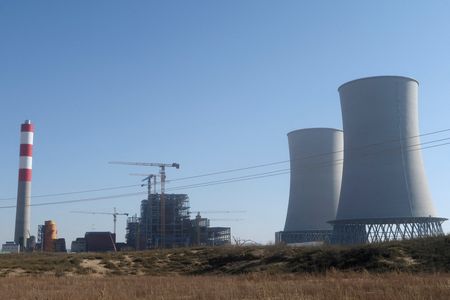By Sudarshan Varadhan
BELEM, Brazil (Reuters) -Decades-long coal-fired power purchase contracts are slowing the transition to cleaner energy sources in Asia, leading utilities to burn more coal even when wind and solar power are available, according to climate researchers and renewable energy advocates.
Rising dependence on coal for power generation in countries such as Indonesia and Vietnam is a major obstacle to global efforts to combat climate change, exacerbated by stalled funding for renewable energy projects from rich countries.
Southeast Asia has 50% to 100% of coal-fired power capacity locked in purchase agreements with about nine to 18 years left on average, according to data from the Powering Past Coal Alliance (PPCA), a coalition of governments, businesses and other organizations pushing for coal use to be phased out.
Buyers in other major Asian economies, like China and India, also hold substantial long-term purchase agreements for coal-fired electricity, leading to underutilisation of wind and solar power in some cases, renewable energy experts say.
“Many of these contracts are often ill-suited to the demands of a modern, renewables-integrated grid,” Julia Skorupska, head of secretariat at the PPCA told Reuters on the sidelines of the COP30 climate conference in Brazil.
STEADY INCOME AND STABLE JOBS
Southeast Asia’s dependence on coal has grown to about 45% of annual power generation from 35% over the last decade, even as the global share has slipped to around 34% from 39%, data from energy think-tank Ember showed.
Clean energy adoption in the region has also lagged global averages, amounting to 26% of annual electricity output compared with 41% globally, the data showed.
Long-term fossil fuel contracts guarantee steady income for coal plant owners and stable jobs for employees, making early retirement politically and economically unattractive, industry officials say.
And when power grids break their coal purchase agreements, they expose themselves to financial penalties that vary depending on the nature of the contract and size of shortfalls.
COAL IN CHINA AND INDIA
Even in China, where carbon dioxide emissions are on track to fall this year, extending an 18-month streak of flat or falling emissions due mainly to increased clean power generation, demand for coal remains high.
Output from its coal and gas-fired power plants rose 7.3% annually in October, government data showed.
“The concern is that we’re seeing a repeat of what happened at the end of last year when grid operators had contracted too much coal power under long-term contracts and decided to curtail solar and wind,” said Lauri Myllyvirta, lead analyst of the Helsinki-based Centre for Research on Energy and Clean Air.
Major economies in the Asia-Pacific region including Japan, Australia and India have also reported increased curbs on renewable energy this year.
China’s solar curtailment rates are projected to average more than 5% in 21 provinces over the next 10 years, up from just 10 provinces during January to August this year, according to consultancy Wood Mackenzie.
Indian states, meanwhile, plan to sign new long-term contracts with coal-fired power generators despite the country’s efforts to expand clean energy capacity.
Electricity retailers’ reliance on multi-decade contracts with coal-fired utilities amid growing renewable generation risks payment of substantial fixed charges and stranded coal assets, Ember and Climate Trends said in a joint report.
“Distribution companies would need to redesign their resource planning and make power purchase contracts flexible,” said Shreya Jai, energy lead at Climate Trends and one of the authors of the report.
(Reporting by Sudarshan Varadhan; Editing by Emelia Sithole-Matarise)











